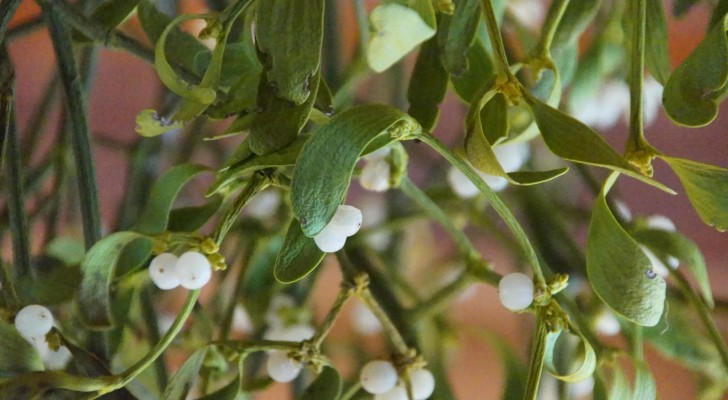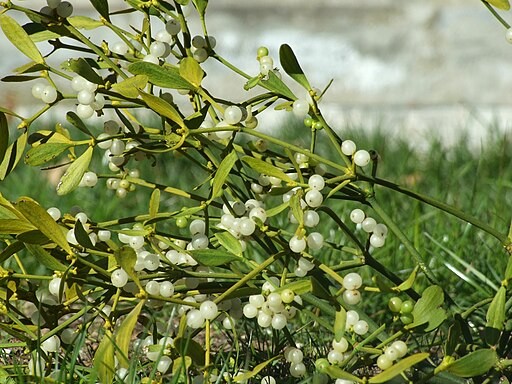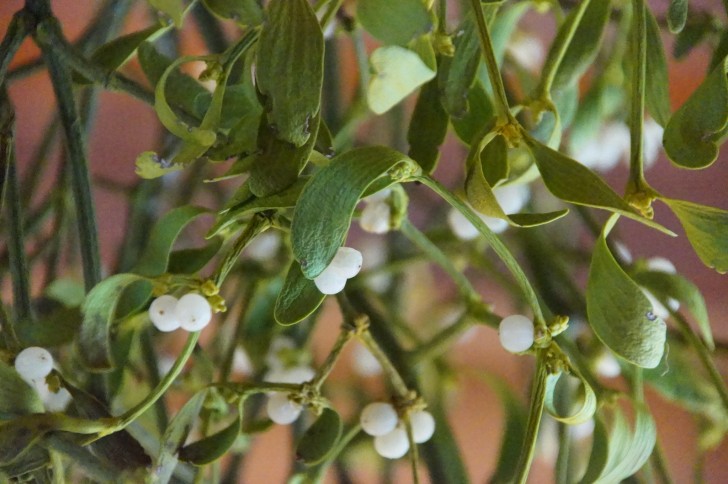Legends about, and properties of, mistletoe - one of the symbols of love, par excellence

Mistletoe is an evergreen, semi-parasitic bushy shrub that grows on fruit trees such as apple or pear trees and is native to America and Europe. This plant can reach considerable heights and is characterized by its oval and yellow-green leaves, which stand out on the bare branches of the plants that host them during the winter. Its fruits ripen in the period between autumn and winter, filling the branches with the iconic berries that are initially white and then turn orange.
One of the undisputed symbols of the Christmas holidays with its elegant beauty and green branches full of berries, mistletoe owes its name to the viscous liquid contained in its berries and can be found hanging up all over the place at Christmastime.
Mistletoe is linked to numerous traditions and legends, representing one of the symbols of love par excellence. But where do these traditions come from and why? Well, keep reading to find out:
A brief history

1CFIORENZUOLA/Wikimedia Commons
In ancient times, mistletoe was a sacred plant due to its characteristic of growing on trees, interpreted as being "halfway between heaven and earth". Greeks, Celts and Teutons believed that it was a divine plant, while in the Middle Ages, it was used as a protective amulet against demons, ghosts, evil spirits and witches. This protection superstition has survived intact to the present day, as has belief that the plant brings good luck.
The tradition that links mistletoe to love comes from Norse mythology, in that it played a key role in determining the fall of Asgard. In this myth, Freya discovers that her son Loki is planning to kill her brother Balder and to prevent it she asks animal and plants to protect her son. She forgets to ask mistletoe, which the evil Loki uses to make a poisoned arrow kill Balder. Freya's tears were transformed into mistletoe berries and the goddess declared this plant a to be a symbol of love, promising to kiss whoever was standing under it.
Why do we kiss under the mistletoe?

Nicu Buculei/Wikimedia Commons
There are many legends intertwined with the tradition of kissing under the mistletoe during the Christmas holidays. While Norse mythology and medieval customs certainly played an important role in the birth of this tradition, it must be remembered that each culture has its own origins story (and history).
The ancient Romans, for example, considered mistletoe a symbol of fertility and kissing under this plant formed part of Roman wedding rituals. In Anglo-Saxon countries, this kissing tradition was used in the Victorian era as a pretext for young couples to escape the rigid rules of the time and get to know each other better.
In France, kissing under the mistletoe is a tradition linked to New Year's Eve and it is treated as a good omen for the year that is about to begin.
Properties of mistletoe

Finally, let's not forget that mistletoe is a plant with numerous therapeutic properties, and has been used since ancient times for its beneficial effects on the cardiovascular and gastrointestinal systems. It has also been used for irregularities of menstrual cycles and as an anti-inflammatory for rheumatism.
Further, young mistletoe branches and berries are used for the preparation of infusions, herbal teas and other extracts.
Did you know all these facts about mistletoe?

